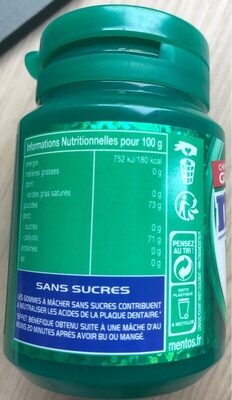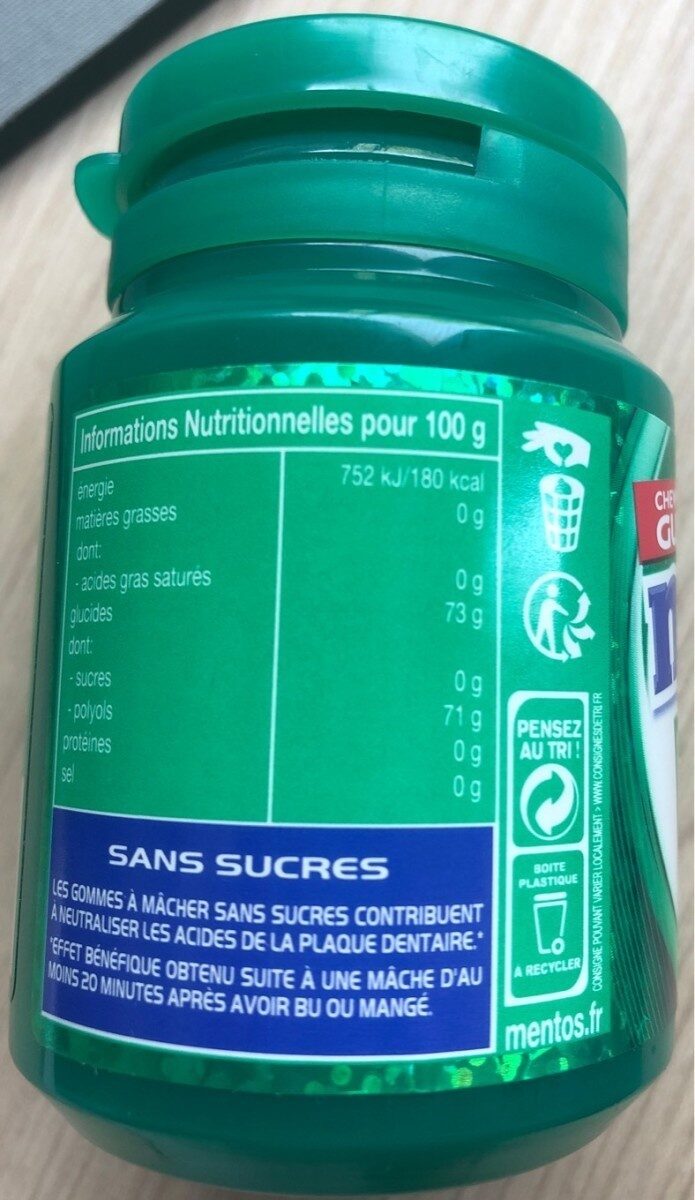Chewing-gum Pure Fresh - Mentos - 60g
This product page is not complete. You can help to complete it by editing it and adding more data from the photos we have, or by taking more photos using the app for Android or iPhone/iPad. Thank you!
×
Barcode: 80839996
Common name: Chewing-gum avec édulcorants, parfum chlorophylle
Quantity: 60g
Brands: Mentos
Categories: Snacks, Sweet snacks, Confectioneries, Chewing gum
Countries where sold: France
Matching with your preferences
Environment
Packaging
Transportation
Report a problem
Data sources
Product added on by openfoodfacts-contributors
Last edit of product page on by kiliweb.
Product page also edited by celine2018, sebleouf, segundo, yuka.IbdlIuLWM9cbHPDj_IIG8SG7E8DwDeRrGlEgog, yuka.YXBBTkdwcFp0dFVReXNVdi9SM0oxZFJ2L3JPN1hrRzJMckVUSVE9PQ, yuka.sY2b0xO6T85zoF3NwEKvlkdWCsrhqAvAbxH6wn-r7POLcbnSW_dt59Wjb6o, yuka.sY2b0xO6T85zoF3NwEKvlnNdCIPumQ_gKCbRknSV_8-xEZPaeuhN7pDUIas.







